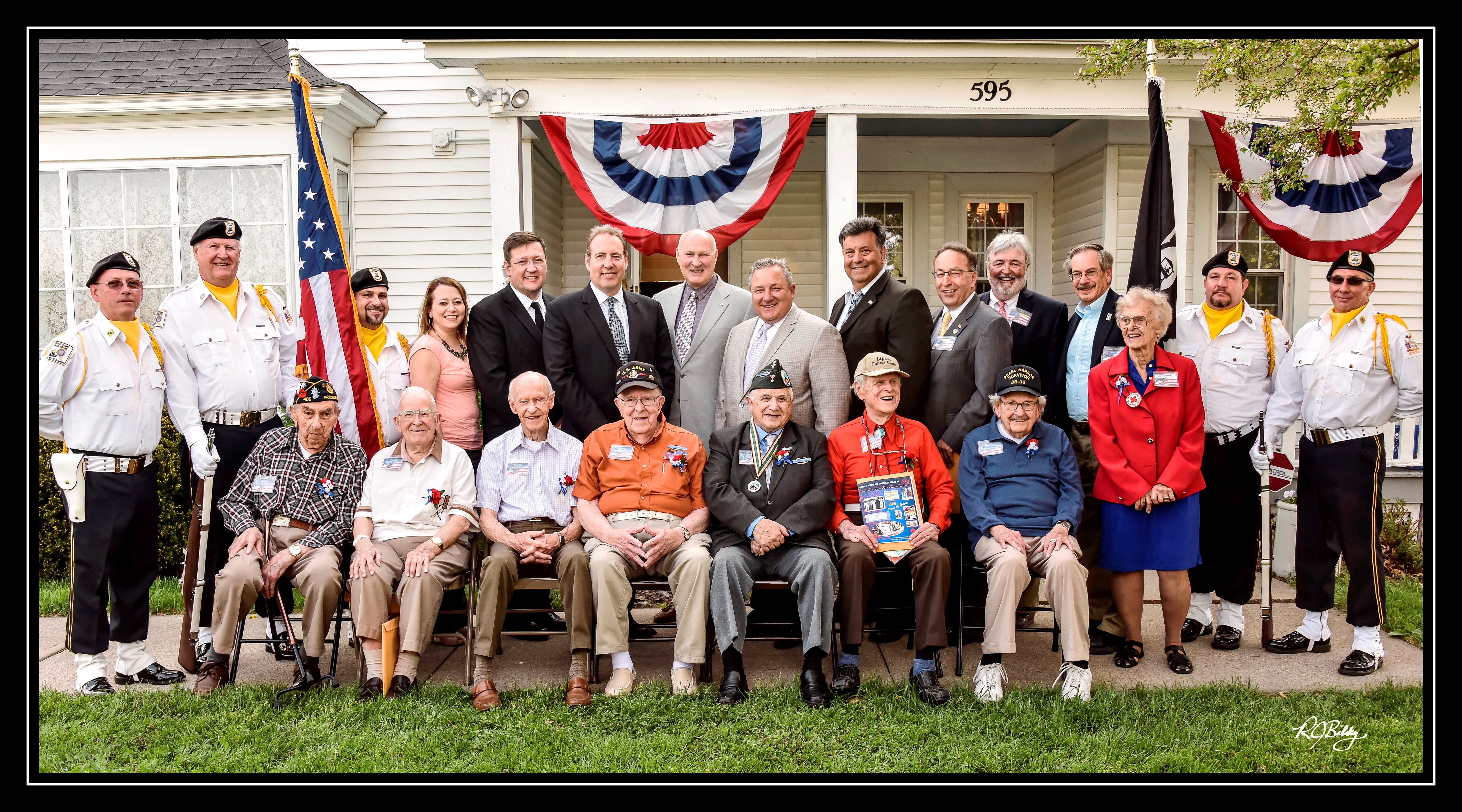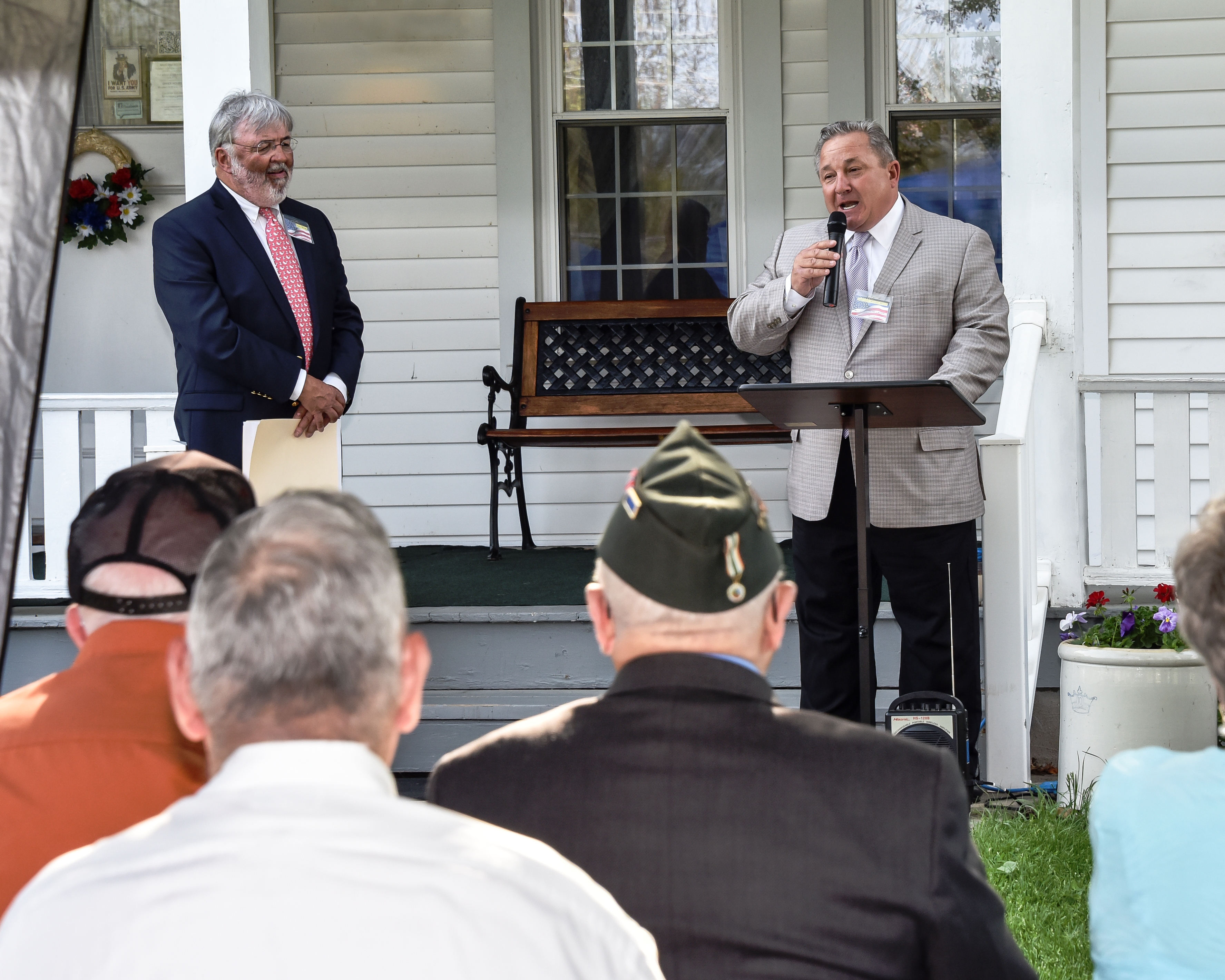Today we’ll share with you what it was like growing up on a farm on Latta Road.
The Whelehan farm at 1438 Latta Road is the last of the Irish family farms in the Paddy Hill community. In 1990, a volunteer with the Greece Historical Society interviewed Francis Howard Whelehan, who lived his entire 94 years there. He described his life growing up on the farm.


Howard’s great-grandparents, Thomas Whelehan and Mary Ryan Whelehan, came to the Town of Greece from King’s County in 1836. Mary was Squire Nicholas Read’s grandniece. They had seven children, three sons, and four daughters. One of their sons, William, inherited the Read farm.
Thomas and Mary’s son, Patrick, born in Ireland in 1832, was Howard’s grandfather and his grandmother was Margaret Goodwin, from another Greece pioneer family; she was born in 1834 to Patrick Goodwin and Rosanna Beaty. Howard’s father, born in 1877 was John Patrick Whelehan. In this photo, which hangs in the living room of the Society’s museum, Patrick is the bearded gentleman in the front row; John Patrick stands directly behind him. Margaret Goodwin Whelehan is seated second from the left.


As you can see from this map, members of the Whelehan family had farms along Latta Road and down Mount Read near Our Mother of Sorrows Church.
After Father John Patrick Quinn became pastor of Our Mother of Sorrows Church,


his sister, Matilda (Tillie) Quinn, moved to Greece, became the organist and choir director of her brother’s church, met John Patrick Whelehan who was in the choir, and married him in 1899.
They moved into the home at 1438 Latta Road which was built for the newly married couple by Patrick Whelehan. Their first child J. Donald was born in 1903 and their second son, F. Howard in 1905. The farm was large and by 1908 they were expanding the number of barns to store hay and grains,

but shockingly, John Patrick died in early 1909. Tillie, a widow at the age of 38, was left with a six- and a four-year-old. As she said when she got home from the funeral, she had two things in life, two little boys and five dollars.
After their father died, Arthur Yates from Elmtree farm…
You can read more on the Yates-Thayer house in A Gentleman’s Country Estate and also check out snapshot # 31 – Iconic Homles in Greece


sent the two little boys a pony.
Although Tillie grew up on a farm in Macedon, she was a school teacher before her marriage and knew little about managing a farm. In addition to the crops, the farm had chickens, pigs, horses, and cattle. Neighbors and family helped initially but she knew she’d have to get some permanent help. When she inquired around, she was told there were two or three men she might hire, but they all had “the same little trouble” Howard recounted in the interview “they liked to drink a little too much.” She did hire one of them, she needed the help.


Farming under the best of circumstances was hard. Most of Tillie’s needs could be met from the farm itself, but when she needed to buy additional goods, she didn’t have ready cash. She would gather 10 to 12 dozen eggs and take them to the grocery store in Charlotte. The grocer always took her word for how many there were. He’d tally up the amount she was due, for example, $3.25. Tillie had her list and she’d walk around picking up coffee, tea, sugar, flour, etc. When the grocer told her, Mrs. Whelehan, you’re getting close to the $3.25, that was it; she had no more money.
Tillie would keep old papers and iron bits like plow points for the rag and scrap men who would come from the city to collect them. She stored them near the chicken shed.


One time a scrap man stopped at the farm, he weighed the paper and iron she had, and paid for them. But the next day, Tillie discovered that every one of her hens was gone. Most likely the scrap man had stolen them. Tillie depended on those hens for her grocery money. Soon all her neighbors each gave her two hens, and her hen house was soon replenished.
In the early decades of Howard’s life, there was no electricity or running water in the house. The house was heated by a cook stove in the kitchen and a pot-bellied coal stove in the parlor. Taking a bath was quite an undertaking which is one reason why they didn’t have one very often. If they were going to see the doctor or the dentist or before going to church on Sunday, Howard said, “naturally we would have to take a bath.” They would pump about two pails of water to heat on the stove. That could take up to 40 minutes. Then they had to haul the heated water down to the basement where there was a tub (chamber pots and washbowls) they could bathe in. The Smithsonian has a good collection of 19th and early 20th-century Portable Bathtubs that can be viewed at https://americanhistory.si.edu/collections/object-groups/portable-bathtubs-tub-bathing-from-the-early-19th-and-20th-centuries.


In late summer or early fall, they would hitch a team to a box wagon and drive down to Greece Lumber on Latta Road (near the bridge over the parkway today, where the now-closed Latta Lea Golf was and a townhouse complex, built next to the parkway) which sold coal and lumber, they filled the wagon with two tons of chestnut coal. They’d store it in the cellar and use it all winter in the pot-bellied stove in the parlor.
In addition to growing potatoes, cabbages, and “every kind of berry” for themselves, Tillie also had a contract with a hotel on the Irondequoit side of the river. This was in the days before the Stutson Street Bridge. Howard and Donald would load up a wagon with potatoes and they and horse and wagon would cross the river on a flatboat called the Windsor that ran on a chain.


Howard also recalled that there were two major parties during the winter. One was always at Leo Whelehan’s home next to Our Mother of Sorrows Church.
Also, Leo Whelehan had reported some of the unusual phantom stories written in Eight Miles Along the Shore. The story of the Phantom Man was featured in our Halloween special for the Bicentennial Snapshots in snapshot 32.

The other was the Janes family home on Long Pond (which was the former Peter Larkin home). Now home to the Lang Dental Group.
In summer they looked forward to going to the Farmer’s picnic every year at Manitou Beach.


Another of his relatives, State Senator Frederick Slater, organized it every year. In this picture, Senator Slater is on the far right. On the way home he’d start making plans for the next year’s picnic, because said Howard “none of us had any pleasure between them.”
Howard also talked about the Big Freeze of 1934. They raised apples on their farm, some to be sold to Duffy-Mott. He recalled lying awake at night hearing the apple trees breaking; he said it sounded like a man was out there with a big board hitting the barn as hard as he could. The next morning when they went out, they could put an arm through any tree, because they had all split open. More on this in snapshot 33 extreme Weather Part 1.


Matilda never remarried. Even so, she successfully ran that farm for years and was able to send her oldest son, Donald, to the University of Rochester and Harvard Law School. Howard took over the farm.
The transcript of the interview with Howard Whelehan is attached below for anyone interested in finding out more about growing up on Latta Road.
Thank you for joining us today; next week we go shopping at Northgate Plaza.

































































































































































































































































































































































































